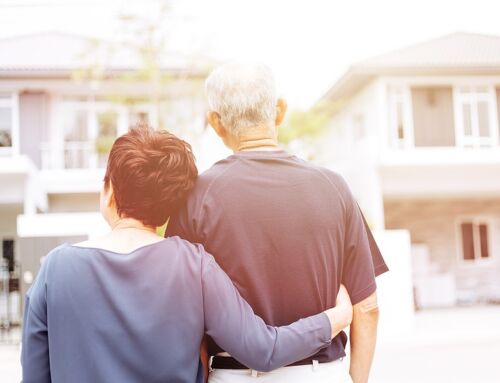Recently, I’ve shared some thoughts on what I believe the continuing care retirement community (CCRC, or life plan community) of the future may look like. While I lack the benefit of a crystal ball, I have offered my insights about community design trends, technology advancements, and the industry’s move toward increased environmental sustainability. Of course, these things only scratch the surface regarding the changes we’ll see in the coming 10-plus years.
A few weeks ago, I asked our blog readers to share their unique perspectives with us about their own senior living preferences and where they would like to see the CCRC industry headed in the future. I asked people—some of whom are considering a CCRC move and others who already live in a CCRC—to complete a short survey that included this open-ended question:
“In two short paragraphs or less, please describe key components of your ideal retirement community of the future, or what you feel must change compared to today’s options. It could include anything from the physical design, to the services offered, to the financial/contract structures and more.”
We got 38 responses to this brief survey, and while the sample size is small, and our results are thus qualitative, there were some interesting, insightful comments shared. Thank you to those of you who took the time to complete this survey; I truly appreciate your time and input!
>> Related: 3 Reasons Seniors Delay a CCRC Move & Why They Should Reconsider
Physical design: Overall community setting
Many respondents said they wanted convenient access to local retail stores and restaurants, and public transportation. They also said they want to feel a strong sense of community—not feel isolated—and have the ability to customize their independent living unit.
One respondent proposed “more zero lot line, patio-style, open-plan homes with nice grounds, pickleball courts, and other amenities similar to what you would find in 55+ communities.” Another similarly noted, “I’m not interested in stale, square, multi-story buildings. Give me a building with character, landscaping, a meditation/quiet garden area (character inside, too).” One person said it is important to them to have “the ability to conform the living area to our desire (e.g., paint, carpet or wood floors, built-in shelves, fence in the yard).”
Energy-efficiency and sustainable design also were themes among the responses we received. “We want to live in an active community that will be sustainable for 30 years, and that means there will likely be climate factors to consider.”
>> Related: The Environmentally Sustainable CCRC of the Future
Other important physical design considerations were suggested for future CCRC construction projects.
- Storage was mentioned by several people, including storage for hobby supplies (like painting or sculpture), as well as secure parking/storage for “toys” like RVs, boats, motorcycles, or canoes.
- Security cameras were mentioned by one respondent, who suggested cameras “all over the property, with residents being able to access and watch from their living rooms. They can do this to watch for their visitors or to see if the pool is crowded, etc.”
Independent living units should be truly “age-friendly,” respondents said, incorporating design elements that will allow residents to essentially age-in-place in their CCRC unit. Examples offered included wider hallways to accommodate scooters/power chairs, ADA-compliant stoves and refrigerators, and pull-out shelving.
One respondent summed it up very nicely: “The communities that will thrive are those that stay ahead of the curve by educating potential residents and offering these [design] changes as insurance for aging-in-place.”
>> Related: Will Aging in Place Soon Become a Thing of the Past?
Services: Wellness lifestyle, dining & other amenities
Dining, understandably, is always an important factor among CCRC prospects and residents. I’ve written about this topic several times, including the increasing focus on choice, flexibility, and quality. A few of the related comments from respondents included:
- Casual dining with more options for couples seating
- More meal plan choices
- Vegan and vegetarian dining options
Relatedly, an environment that supports an overall healthy lifestyle—physically and mentally—was important to several of the respondents. One noted, “I prefer a healthy setting, more classes, less sugar, healthy meals, on site consultants for nutrition, wellness.” Another person said, “I seek a good gym and lifetime learning opportunities (this may be lectures at the facility).”
Other suggestions included the incorporation of more walking paths, dog parks, casual gathering spaces, and travel programs. More LBGT-friendly communities are also of importance.
>> Related: Bon Appetit: CCRCs Opening Their Dining Facilities to the Public
Financial/Contract structure
People definitely had thoughts on the direction they would like to see for CCRC costs and contract-types. One person even suggested the industry may have difficulties in the future because of the cost and people’s desire to remain in their current homes.
For the record, I disagree with this dire assessment; the CCRC industry is thriving and continues to evolve to meet the needs of future residents. However, I agree that this is one of the reasons why the industry needs to really focus on what it means to offer a “home.”
There were some interesting suggestions for ways to improve CCRCs’ financial and contract terms in the years to come:
“I’d like to be able to negotiate lower monthly fees by paying a higher one-time entrance fee.”
“I want clarity on monthly costs, extras, penalties, and exit fees. Also, absolute clarity on how long-term care is included if applicable.”
“Would prefer a non-refundable model of payment — we have no kids to leave money to and could better use the money to maintain ourselves. Those CCRCs with a large buy-in and large refund just don’t work for us.”
“I am already seeing that life [care] plans are giving way to ‘pay as you go’ or ‘a la carte’ models. I think we will see more monthly models and less buy-in contract models.”
“Type D rentals will be needed to attract baby boomers who may be living off reverse mortgages and don’t have equity to pay large entrance fees.”
>> Related: Why Is Comparing CCRCs So Difficult?
Other notable topics
There were a few other themes that emerged from the responses we got to this brief survey. One was around CCRCs’ healthcare services. A respondent proposed having stronger relationships with external resources, such as independent case managers/advocates, for residents who are seeking advice on care-related issues. To assist with residents’ emotional health, another person suggested CCRCs “provide support groups for common events like grief.”
Comments around management structure were also included in some people’s survey responses. There was a desire for an increased sense of control for residents in the future. I’ve mentioned this in previous posts, and it’s something that I am hearing more and more. One person advocated for “more transparency with management and sense that they are working for the residents’ best interest,” while another voiced a desire for “clear and honest resident governance structure.”
An interesting suggestion from one person was to create interactive resident town hall meetings. These resident-management forums would be live-streamed so people could watch and even participate by texting questions from the comfort of their residences. What a great idea!
>> Related: How to Know If a CCRC’s Healthcare Center Will Meet Expectations
Going to the source of truth
Overall, it was both interesting and helpful to read the survey respondents’ thoughts and ideas of about their views of the future of the CCRC industry. These CCRC residents and prospects are the people who have the perspectives we in the industry need to be considering as we make decisions about design, amenities, cost and contract structures, and management for tomorrow’s CCRCs.

FREE Detailed Profile Reports on CCRCs/Life Plan Communities
Search Communities






